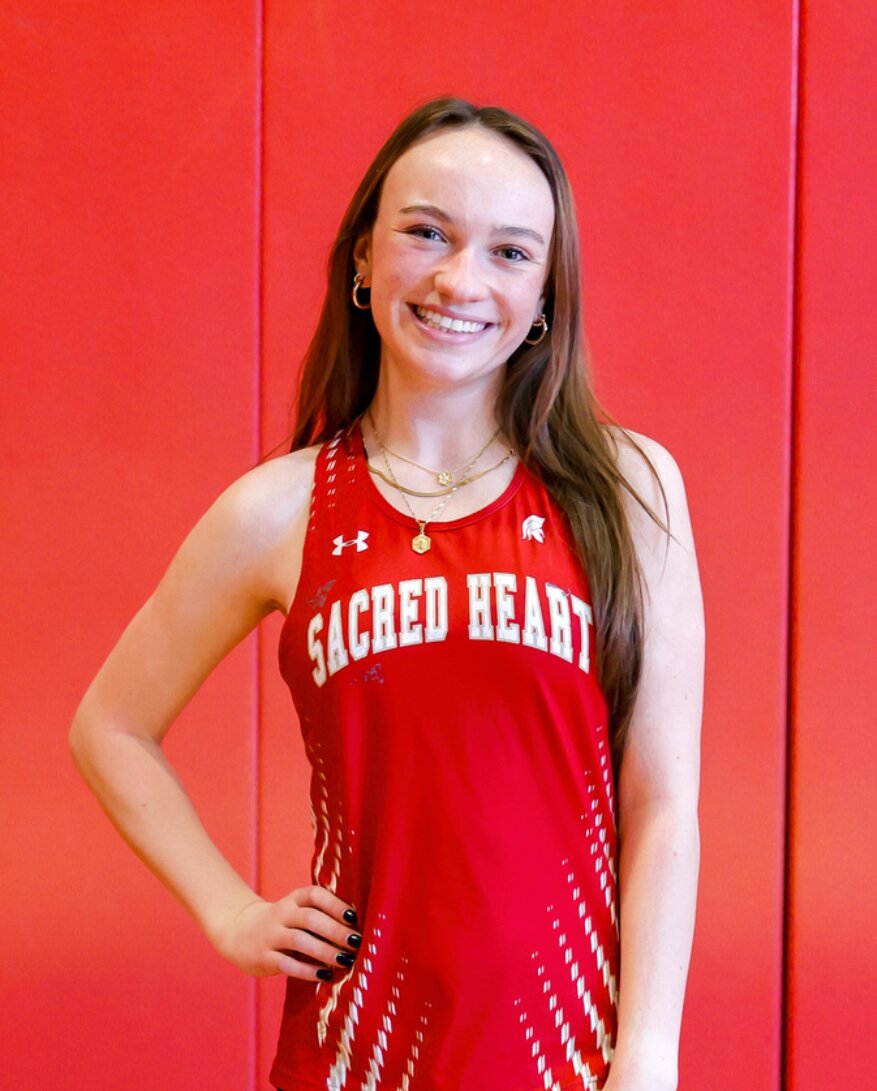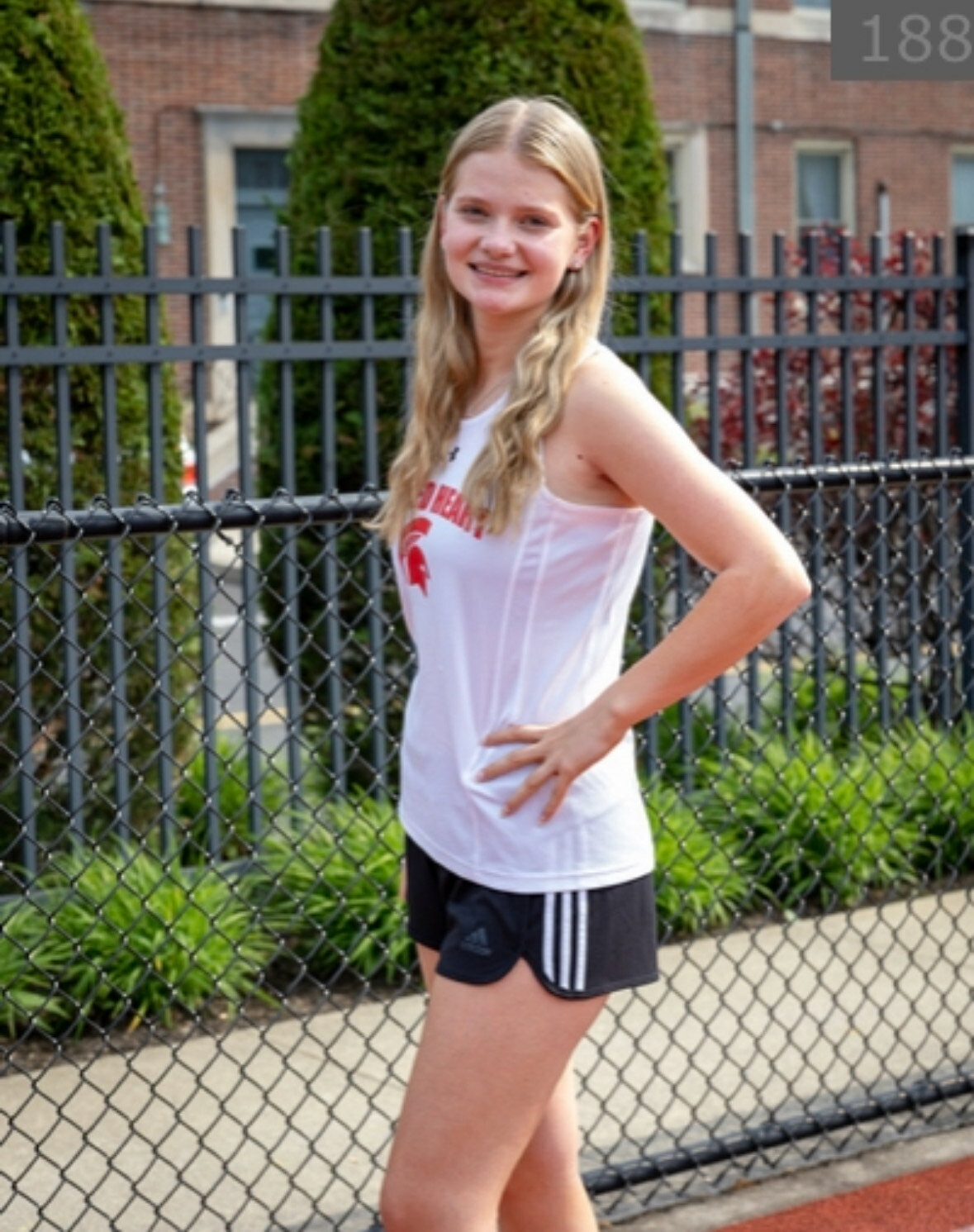Saturday, April 27, 2024
 44.0°,
Mostly Cloudy
44.0°,
Mostly Cloudy
Sacred Heat students analyze body image dysfunction

Isabella Masterson studied body image dysfunction during her junior year in high school. Now, one year later, she is going to San Francisco to present her findings.
Masterson, from Lynbrook, joined forces with classmate Jacqueline Quinn at Sacred Heart Academy to work on the project, looking at body image dysfunction in both male and female athletes. Once completing this research, they wrote a proposal to present their research results at the Association for Psychological Science — APS — conference in May. The proposal consisted of their research background, methodology, results, and discussion.
“This is the culmination of six months of work, surveying two hundred high school students, and applying data analysis to determine the effects of athletics on perceived body image,” Masterson said.
Starting in September of 2023, Masterson and Quinn spent time together in a research course where they formulated most of their proposal for APS. However, this was not a course requirement. They also submitted this project for their senior thesis.
“The girls need to do a senior thesis but APS is not required,” Stephen Sullivan, research director at Sacred Heart Academy, said. “They need to do a project, but there are no specific requirements as to what they need to do.”
Quinn and Masterson are both runners on the varsity track and field team at Sacred Heart. So they figured that they could use the topic of sports as a starting point for their project.
Masterson explained that she and Quinn both have brothers involved in their school sports and used that to their advantage in getting male athletes to participate in their research survey.
“We also had looked into some literature looking at athletes and their body image in general,” Masterson said. “The girls in the study tend to believe that the skinner the better, whereas the males in the study believed the muscular the better.”
Quinn mentioned that she has family members who have struggled with body image so this was already an important topic for her to tackle. When the opportunity arose for her to do this project, she jumped at the opportunity.
“We had 200 participants of the research in total,” Quinn said. “We basically used snowball survey where we would ask one person to take the survey and pass it along to other people.”
Initially Quinn and Masterson struggled to find male athletes to participate in their survey because they go to an all-girls catholic school. However, Quinn explained that she and Masterson gave the first survey to their brothers and they gave it to other male athletes in their schools. For the female athlete responses, Masterson and Quinn surveyed fellow athletes at their school.
Another challenge that they ran into was how a lot of the body image surveys that they looked into featured questions targeted at women. Quinn explained that they were able to overcome this issue by using psychology professor Thomas Cash’s survey from 1987, titled “A multidimensional innovator in the measurement of body image,” which was more gender neutral.
“Part of the paper and part of the whole study is looking at previous literature and finding the background on the issue, which is pretty much how we came up with our topic,” Quinn said.
The conclusion of their research noted how female athletes have worse body image dysfunction than male athletes. Masterson said the reason for this was that girls were more involved in sports like gymnastics, ballet, and dance. According to their research, this made the athletes overly conscious about their body image and how they wanted a slimmer frame.
“We were able to find that the athletes that had to be judged based on their body look had the worst body image dysfunction than the sports that were more team aspects wise, where it was more about scoring goals and making the most points for the team,” Masterson said.
Their research also addressed some of the causes of the body image issues, which included parent influence, judges in sports like dance and gymnastics, and more.
“Our findings would help coaches, parents, judges be more conscious about having positive language,” Quinn said.
Their interests in science research will transcend high school. Masterson said she wants to major in pre-med in college and pursue research there. Quinn said she plans on studying biology or biochem and wants to go to a school that has a level one research facility.
HELP SUPPORT LOCAL JOURNALISM
The worldwide pandemic has threatened many of the businesses you rely on every day, but don’t let it take away your source for local news. Now more than ever, we need your help to ensure nothing but the best in hyperlocal community journalism comes straight to you. Consider supporting the Herald with a small donation. It can be a one-time, or a monthly contribution, to help ensure we’re here through this crisis. To donate or for more information, click here.
Sponsored content
Other items that may interest you









